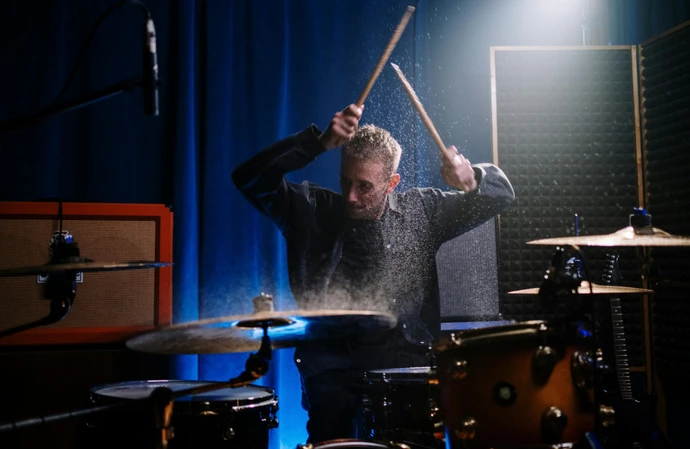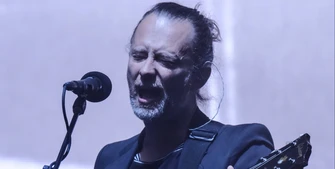When Repetition Becomes Art - Beats, Loops, and the Roulette Effect
How can the “roulette effect” transform simple patterns into art?

Ever noticed how the same beat can hit differently each time you hear it? That’s the magic of repetition. It's not just doing something repeatedly; it’s turning it into something new. Whether it's a drum loop, a dance move, or a word that stays in your head, repetition can transform anything into captivating and catchy tunes.
Below, we’re diving into how beats, loops, and the “roulette effect” transform simple patterns into art. It’s not about getting bored. It’s about getting pulled in. Let’s explore how repetition keeps us listening, watching, and feeling.
The Roulette Effect: Pattern with a Twist
The roulette wheel may be simple, but it’s nonetheless fascinating. The wheel is perfectly symmetrical, but the game itself is unpredictable. However, much like playing slots, this unpredictability is what makes roulette so appealing. You may play the same game, but each spin will always feel different. Once the ball is tossed in, you never know where it lands. That’s where the excitement lives.
Music works the same way. Think about your favourite chorus. Its tune follows a repeated pattern but still hits differently every time. The beat might drop heavier, the singer adds a twist in the delivery, or the mood shifts slightly with the lyrics. That subtle change is what keeps us hooked. It's the Roulette Effect—structured repetition, with just enough surprise to keep it interesting.
Like a loop in a song, the structure of the roulette wheel creates trust, but the twist brings the thrill. That balance of predictability and surprise? It’s what makes both music and roulette unforgettable. In art and chance, we don’t just want repetition. We want to see where it leads.
Loops in Hip-Hop: Building Blocks of a Beat
In hip-hop production, loops are short, repeating sections of sound that form the backbone of a beat. They provide a consistent rhythm and mood, allowing producers to build complex tracks efficiently. This technique has become a staple in modern music production, particularly hip-hop.
Producers like J Dilla, Madlib, and Metro Boomin have mastered the art of looping. J Dilla's work on albums like Doughnuts showcases his innovative use of loops to create soulful, textured beats.
Madlib, known for his eclectic sampling, often chops up and rearranges loops to craft unique soundscapes. Metro Boomin utilises loops to produce catchy, atmospheric tracks that dominate the charts.
The power of looping lies in its balance of repetition and variation. While the repeated sections anchor the track, subtle changes and additions keep the listener engaged. This dynamic approach allows producers to maintain a groove while introducing new elements to surprise and delight the audience.
Essentially, loops aren't just repetitive sounds. They're the building blocks that give hip-hop its distinctive rhythm and feel.
Pop’s Secret Weapon: The Recurring Chorus
In pop music, the chorus isn’t just a catchy hook—the emotional core keeps listeners coming back. Artists like Taylor Swift, Billie Eilish, and The Weeknd craft choruses that stick in our minds, making their songs unforgettable.
Our brains are wired to enjoy repetition. Hearing the same phrase repeatedly creates a sense of familiarity and comfort, enhancing our connection to the music. This phenomenon—known as the ‘mere-exposure effect’—explains why repeated listening increases our appreciation of a song, regardless of its complexity.
Moreover, catchy choruses often become “earworms”—tunes that loop in our heads long after the music stops. This occurs because our brains recognise patterns and associate them with emotions, making certain melodies memorable.
Recurring pop music chorus is a powerful tool. It anchors the song's emotional impact and ensures it resonates with listeners long after the final note.
When Repetition Becomes Art
Repetition in music isn't just about looping the same notes—it's a powerful tool artists use to build emotion, tension, and expectation. Take Steve Reich, for instance. His minimalist compositions, like Music for 18 Musicians, use repeating patterns that subtly shift over time, creating a hypnotic effect that draws listeners in.
Daft Punk, the iconic electronic duo, mastered repetition in tracks like “Around the World”, where the title phrase repeats 144 times. This isn't mere repetition; it's a deliberate technique to create a catchy and immersive groove.
Frank Ocean employs lyrical looping to convey deep emotion. In “Thinkin Bout You”, the repeated lines mirror obsessive thoughts, emphasising the song's themes of longing and uncertainty.
When used thoughtfully, these artists show that repetition transforms simple motifs into profound musical experiences.
Repetition Isn’t Redundant—It’s Revolutionary
Repetition in music isn’t just filler. It’s fuel. From hip-hop loops to pop choruses to minimalist rhythms, artists use it to guide emotion, build tension, and spark surprise. Like a roulette wheel, the pattern stays, but every spin feels new. That’s the secret: structure meets spark. That’s art.















